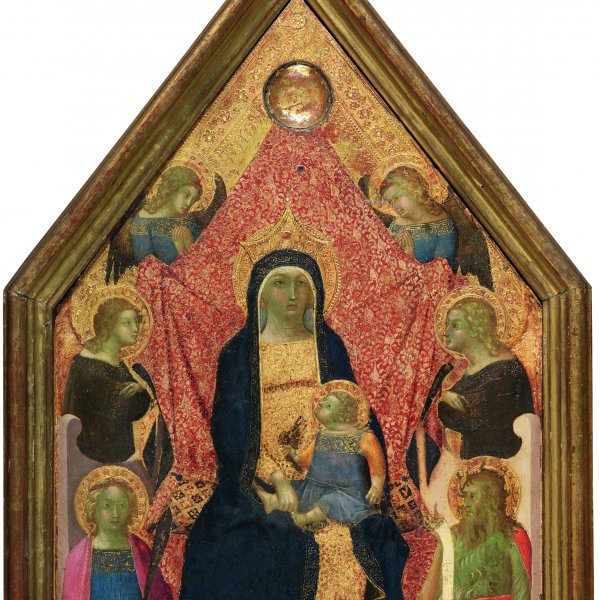Bartolommeo Bulgarini
Siena, active in 1337-Siena, 1378
Bartolommeo Bulgarini was probably born around 1300–10 and is documented in Siena and Florence between 1337 and 1378. Despite the information that has survived on this artist and the fact that his name appears in various documents, his artistic personality continues to be the subject of some confusion. This is partly due to the fact that a group of works was attributed to him that had previously been attributed to two anonymous masters known as “Ugolino Lorenzetti” and the “Maestro Ovile”. In 1931 Meiss decided that these works were in fact by a single artist, whom he identified five years later as Bartolommeo Bulgarini. Later discoveries confirmed this hypothesis, in particular the identification of The Adoration of the Shepherds in the Fogg Art Museum (Cambridge, Mass.) as the one mentioned in an inventory of Siena cathedral in which it is described as a work by Bulgarini. Nonetheless, areas of disagreement remain regarding various aspects of this artist’s oeuvre.
Bulgarini’s style is a synthesis of the influence of Ugolino di Nerio and Pietro Lorenzetti. The artist created carefully thought-out compositions with a sense of depth, monumentality and striking colour contrasts. Among his early works is a polyptych of around 1345, now divided between Villa Guinigi in Luca, the Capitoline Museums in Rome and the National Gallery of Art, Washington. Dating from Bulgarini’s mature period is the panel of The Adoration of the Shepherds in the Fogg, while an example of his late style is The Assumption of the Virgin of around 1360–61 in the Pinacoteca Nazionale in Siena. In 1370 the artist and his wife Bartolomea are registered as members of the confraternity of the Hospitale de Santa Maria della Scala, a charitable institution for which Bulgarini painted at least five altarpieces. Bulgarini lived and worked in Tuscany, primarily in cities such as Siena, although he is also documented in Florence.
Bulgarini’s style is a synthesis of the influence of Ugolino di Nerio and Pietro Lorenzetti. The artist created carefully thought-out compositions with a sense of depth, monumentality and striking colour contrasts. Among his early works is a polyptych of around 1345, now divided between Villa Guinigi in Luca, the Capitoline Museums in Rome and the National Gallery of Art, Washington. Dating from Bulgarini’s mature period is the panel of The Adoration of the Shepherds in the Fogg, while an example of his late style is The Assumption of the Virgin of around 1360–61 in the Pinacoteca Nazionale in Siena. In 1370 the artist and his wife Bartolomea are registered as members of the confraternity of the Hospitale de Santa Maria della Scala, a charitable institution for which Bulgarini painted at least five altarpieces. Bulgarini lived and worked in Tuscany, primarily in cities such as Siena, although he is also documented in Florence.





